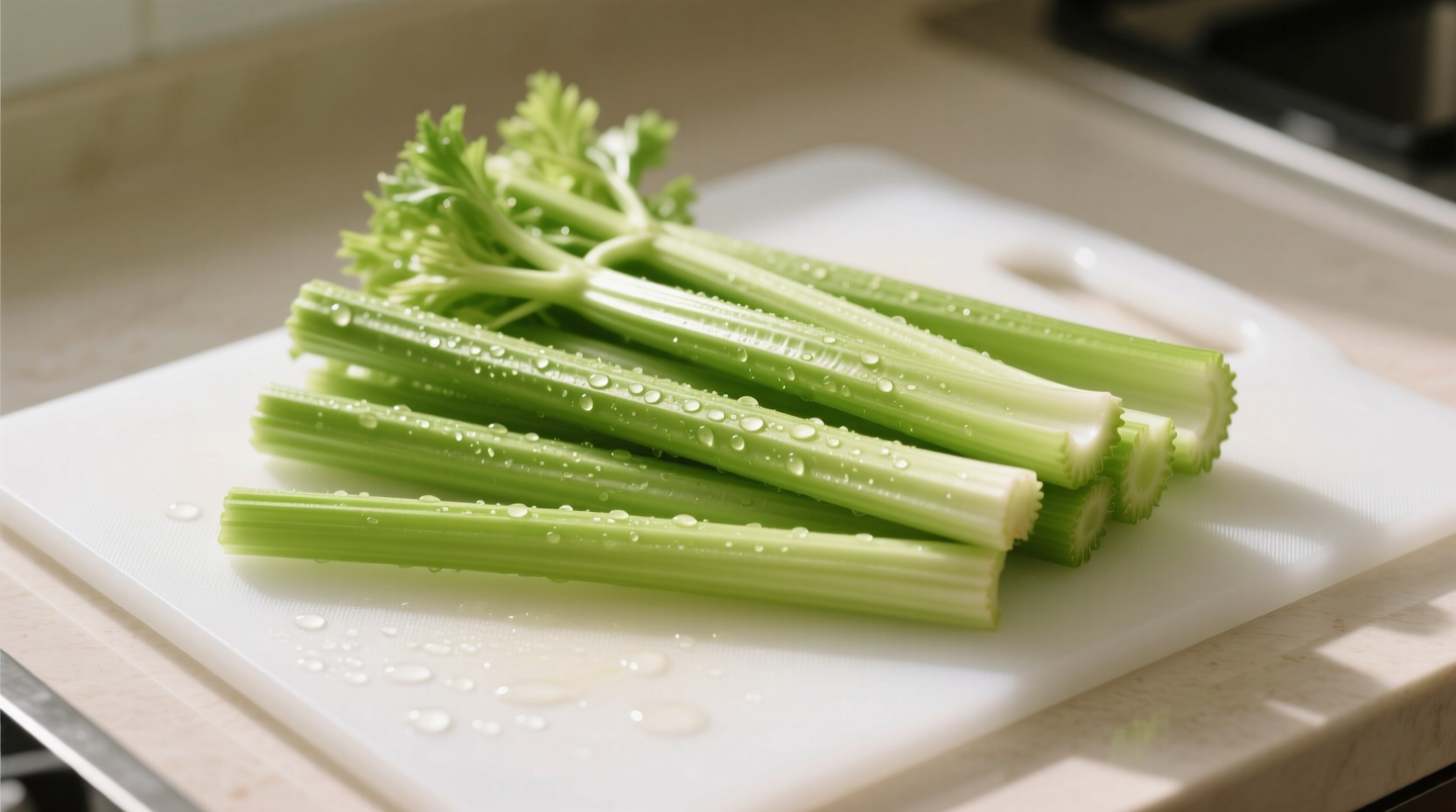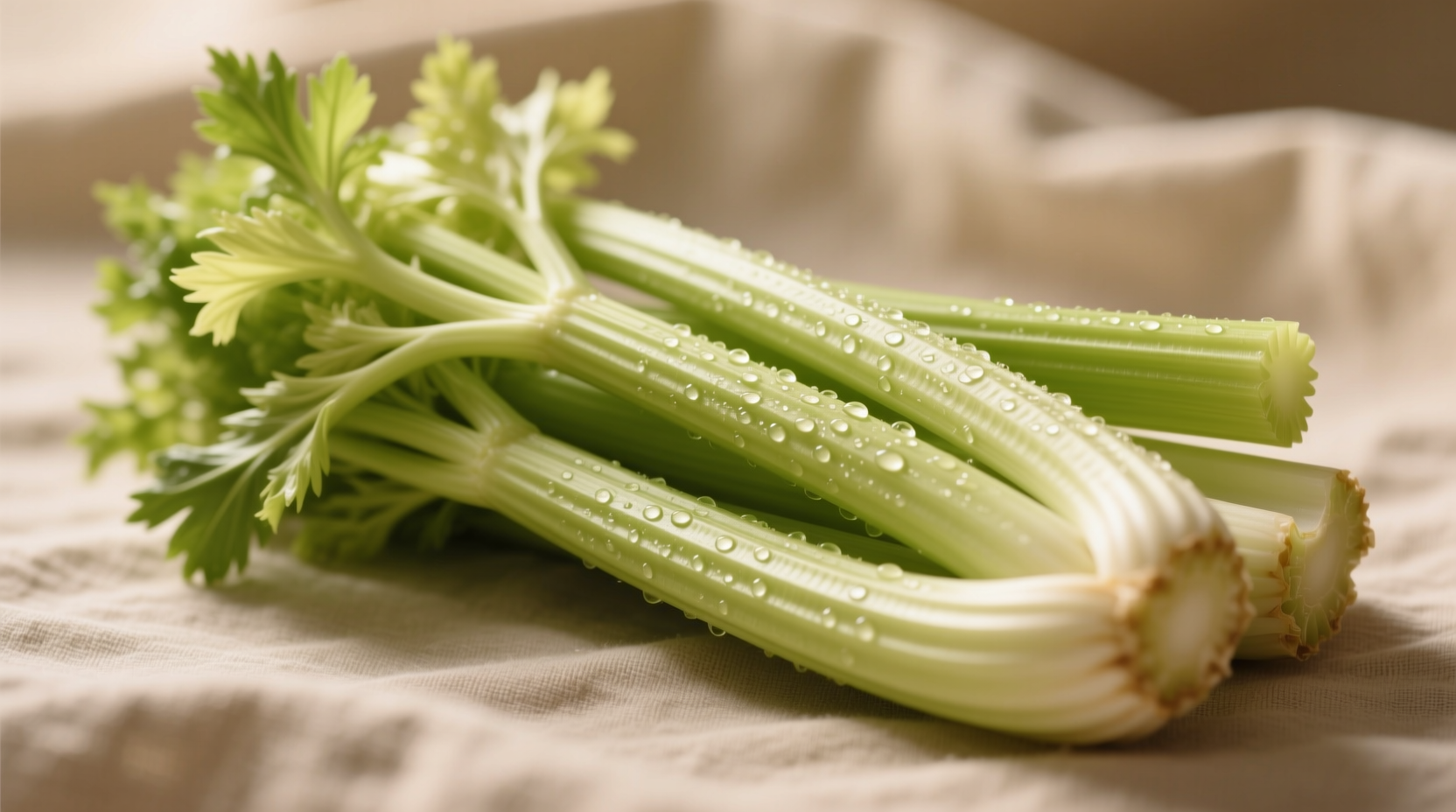Celery ribs are simply the individual stalks of a celery bunch—the term “ribs” refers to the rib-like structure of each firm, curved stalk, not actual bones. One average celery bunch contains 8-10 usable ribs, each packed with hydration, fiber, and essential nutrients like vitamin K and potassium.
Why Are Celery Stalks Called “Ribs”? Clearing Up the Confusion
Many home cooks wonder why celery stalks are commonly called “ribs” when celery contains no bones. The term comes from the rib-like appearance of celery stalks—their curved, parallel structure resembles animal ribs. This culinary terminology has been used since the 19th century, appearing in historic cookbooks like Miss Beecher's Domestic Receipt Book (1846). Unlike meat ribs, celery ribs are entirely plant-based and form the structural support system for the leafy greens at the top.
Selecting the Perfect Celery Ribs for Your Kitchen
When choosing celery at the market, look for these quality indicators:
- Vibrant color – Bright green or pale green ribs without yellowing
- Firm texture – Stalks should snap crisply when bent
- Intact leaves – Fresh green leaves indicate recent harvest
- No hollow centers – Press gently; quality ribs feel solid
| Celery Variety | Color | Flavor Profile | Best Culinary Uses |
|---|---|---|---|
| Pascal (Standard) | Pale green | Mild, slightly salty | Soups, stocks, raw eating |
| Golden Self-Blanching | Yellow-green | Sweeter, less fibrous | Salads, garnishes |
| Red Celery | Deep pink-red | Earthy, complex | Specialty dishes, visual appeal |
Proper Storage Techniques to Extend Freshness
Celery ribs lose crispness quickly when stored improperly. Follow this timeline for maximum shelf life:
- 0-24 hours after purchase: Trim ends and store upright in 1-2 inches of water in the refrigerator
- Days 2-5: Replace water every 48 hours; ribs maintain 95% crispness
- Days 6-10: Transfer to airtight container with damp paper towel if water method fails
- Beyond 10 days: Consider freezing for cooking applications (not raw use)
According to USDA food safety guidelines, properly stored celery maintains optimal quality for 7-10 days. The water storage method works because celery naturally grows in moist environments—recreating these conditions slows the evaporation process that causes limpness.
Preparation Methods Professional Chefs Use
How you prepare celery ribs dramatically affects both texture and flavor absorption:

Cleaning Technique
Run each rib under cold water while gently rubbing with a soft brush. Pay special attention to the crevices where soil collects. For pesticide removal, the FDA recommends a 15-second rinse under running water—more effective than soaking.
Cutting Methods
- Dice for mirepoix: Cut 1/4-inch uniform pieces for even cooking
- Julienne for salads: Thin 2-inch strips maximize surface area
- Leave whole for braising: Preserves natural juices during slow cooking
Nutritional Powerhouse in Every Rib
One medium celery rib (40g) provides:
- 6.5 calories
- 0.3g dietary fiber (1% DV)
- 11% of daily vitamin K needs
- 2% potassium
- Natural sodium (32mg)
Data from the USDA National Nutrient Database confirms celery's status as a nutrient-dense food with exceptional water content (95%). The fibrous structure contains valuable phytonutrients like apigenin and luteolin that support vascular health.
Culinary Applications Across Global Cuisines
Celery ribs function differently depending on the culinary tradition:
- French cuisine: Essential in mirepoix (with carrots and onions) as flavor foundation
- Chinese cooking: Stir-fried quickly to maintain crunch in lettuce wraps
- Mediterranean dishes: Raw in salads with lemon-olive oil dressings
- Mexican salsas: Finely diced for texture contrast in pico de gallo
Professional chefs note that the inner ribs (paler in color) have more delicate flavor ideal for raw applications, while outer ribs (darker green) offer stronger flavor better suited for cooking.
Common Misconceptions About Celery Ribs
Several myths persist about celery preparation:
- Myth: Removing strings improves texture Fact: The strings contain valuable fiber; proper chilling makes them tender
- Myth: Celery has negative calories Fact: While low-calorie, the thermic effect doesn't exceed caloric content
- Myth: All ribs taste identical Fact: Inner ribs are sweeter; outer ribs have more pronounced flavor
Maximizing Flavor in Your Cooking
To get the most from celery ribs in your dishes:
- Always add to soups during the last 20 minutes of cooking to preserve texture
- Pair with acidic ingredients like lemon to enhance natural sweetness
- Use the leafy tops in herb blends for concentrated celery flavor
- Roast at 400°F for 25 minutes to develop caramelized sweetness
Understanding these celery rib characteristics transforms how you approach recipes calling for this versatile vegetable. Whether you're making classic chicken soup or innovative vegan dishes, proper selection and preparation of celery ribs elevates your culinary results significantly.











 浙公网安备
33010002000092号
浙公网安备
33010002000092号 浙B2-20120091-4
浙B2-20120091-4